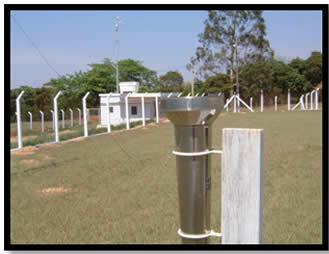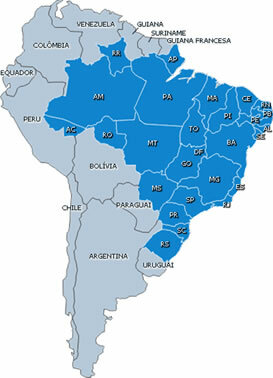O Middle East, also called middle East, is a region of the globe that includes some countries in Asia and one in Africa.
It has a population of around 270 million people, most of whom are Arabs.
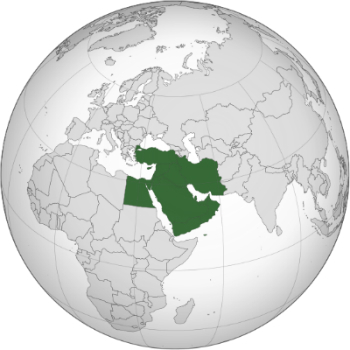
World map highlighting the Middle East region
This region includes some capitals and large cities such as Cairo (Egypt), Istanbul (Turkey), Ankara (Turkey), Tehran (Iran), Baghdad (Iraq), Riyadh (Saudi Arabia) and Dubai (United Arab Emirates).
There, several populations of antiquity developed, such as the Mesopotamians and the Egyptians. Its history, since then, has been full of alliances and conflicts that originated this region.
Note that part of Turkey is located in Europe, being the only Middle Eastern country on that continent.
General features
Location
The Middle East is located between the Mediterranean, Black, Caspian, Arabian and Red seas. It has an area of approximately 7,200,000 km2 covering more than 15 territories.
Map and Countries
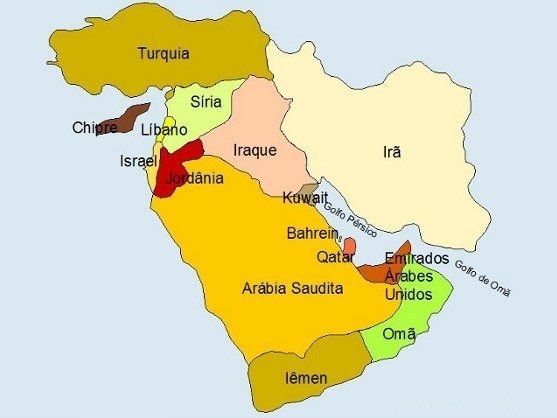
Map of Middle East Countries
The countries that are part of the Middle East are:
- Egypt
- Israel
- Lebanon
- Palestine
- Jordan
- Syria
- Turkey
- Iraq
- Bahrain
- Kuwait
- Saudi Arabia
- United Arab Emirates
- Oman
- Yemen
- Qatar
- Cyprus
- Will
Note that these countries and the state of Palestine are included in the traditional definition of the Middle East. The G8, for example, already includes Afghanistan, Pakistan and some countries in the North Africa.
Climate
The predominant climates in the Middle East are the semiarid it's the desert. Both are marked by high temperatures and low rainfall.
Thus, it is a very dry region where the relative humidity is low. Two important deserts are located in the region: the Arabian Desert (in the Arabian Peninsula) and the Sahara Desert (in Egypt).
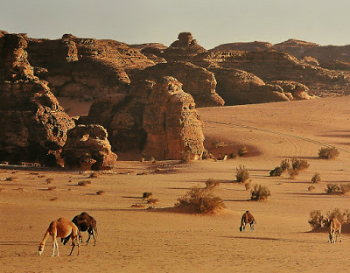
Arabian Desert
In regions where the semiarid climate is predominant, the rainfall index is usually a little higher.
Vegetation
Due to the hostile climate, vegetation in the region is scarce. It is marked by deep-rooted plants, some trees, grasses and cactuses.
These plants have evolved ways to survive in this type of environment, retaining water for most of the time.
Where the semi-arid climate prevails, more vegetation is found in places of prairies and steppes.
On the coast, vegetation is even more abundant, with the presence of shrubs and trees. This is because the humidity, being close to the sea, is higher, which favors the development of more plants.
Hydrography
One of the factors in the development of this climate and vegetation present in the Middle East is due to the small number of rivers that cross the region.
The main ones are the Tiger it's the Euphrates, located in the region known as Fertile Crescent. In addition to them, the Jordan river it's the Nilo river.

Fertile Crescent Region (in pink) and the location of the Tigris and Euphrates rivers
Having made this observation, we must emphasize that water in the region is scarce, which can lead to the development of more conflicts involving this natural resource.
Culture
The Middle East has a very strong religious culture. That's because it was there that different religions from Christianity, Judaism and Islam developed. Therefore, the site houses several temples and religious sites, such as Mecca and Jerusalem.
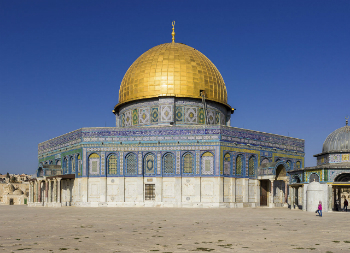
Dome of the Rock, one of the holy places in Jerusalem and an example of Islamic architecture
It is a very diverse region that is home to several ethnic groups, the most prominent being the Arab. This makes the place a large cultural complex.
Read too:
- arab culture
- Muslim culture
Economy
The Middle East region is an important economic center in the world. One of the biggest reasons is the existing oil reserves as well as precious stones.
Saudi Arabia and Iran are the two countries that have the largest oil reserves in the world. Apart from them, Iraq, Kuwait, Bahrain, Qatar and the United Arab Emirates are also oil exporters.

Installations of Saudi Aramco, an oil and gas company in the city of Dhahran, Saudi Arabia.
Approximately 60% of the world's reserves of this ore are located here. Even though the data show that these reserves generate a lot of profits, a large part of the population that lives in the Middle East is poor. In other words, this explains that there is a bad distribution of income in the region.
Another sector that is developing in the region is the agricultural sector. Animal husbandry and some crops (sugar cane, rice, wheat, etc.) are developed in areas where the soil is more fertile.
Finally, tourism is also an activity that drives the economy of these countries, especially Turkey, Saudi Arabia, the United Arab Emirates and Israel.
The city of Mecca, in Saudi Arabia, presents a very expressive Muslim religious tourism every year.
In this sense, Jerusalem also stands out as one of the oldest cities in the world and considered sacred to Christians, Jews and Islamists.
Main Conflicts
For centuries many conflicts have been developed in this region, where contact between three continents occurs. We can say that this is one of the most conflicted places in the world.
It is noteworthy that most of them are related to religion, or rather, with religious intolerance. We must also point out that most conflicts involve the conquest of territories by the countries that make up the Middle East.
In addition, the region's climatic conditions make it dependent on the export of water and other products.
One of the most outstanding is the conflict between Arabs and Jews, which was intensified in modernity after the first world war.
However, it was only after World War II that the UN decided to create a state for each of them. Faced with this proposal, Palestine was divided into two parts, one Jewish and the other Arab.
As the Jews got a bigger part of the territory (about 57%), the Palestinians (Arabs) were unhappy with the partition.
Shortly thereafter, in 1948, the Jews created the State of Israel and the Arabs declared war. However, the Palestinians were defeated and consequently, the territory of the Jews grew even more, about 20%.
Undoubtedly, this has still been one of the biggest reasons for the enduring conflicts over conquering territories in the region. The Gaza strip deserves to be highlighted, a place disputed between Palestinians and Israelis.
Another conflict that deserves attention is between Sunnis and Shiites. Both are Muslims and have political and religious differences. This has led to increased tension in several countries in the Middle East, especially Iran and Saudi Arabia.
In addition, the place continues to be the target of several wars such as the War in Iraq, the War in Syria, the Gulf War, the Six Day War, etc.
Roughly speaking, they were developed by diverse political interests (including Russia and States United States) and also, due to economic interests, as the region has a high potential economic.
read more:
- Israel-Palestine Conflict
- Iraq war
- War in Syria
- Six Day War
- Gulf War
- Gaza Strip
- Sunnis and Shiites
- September 11th
- osama bin laden
- Dead Sea

